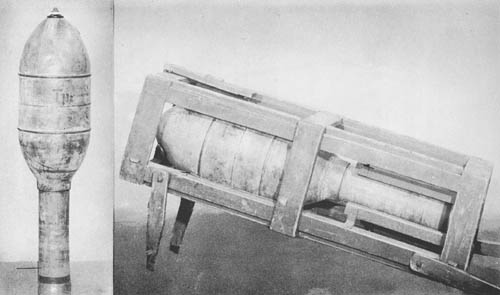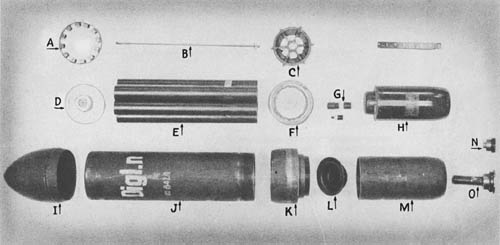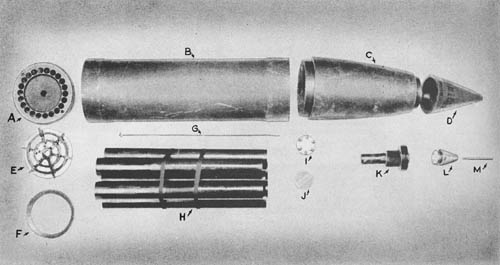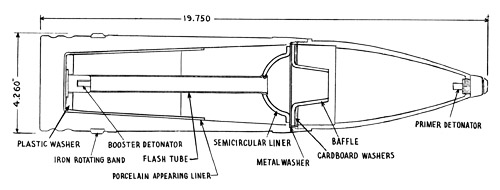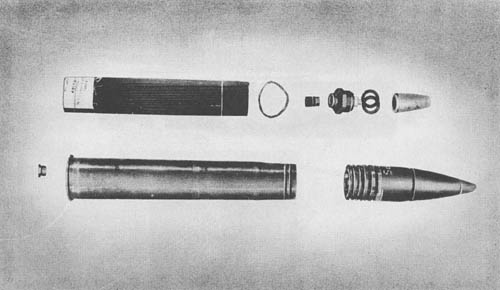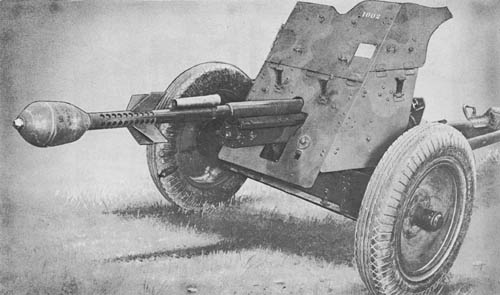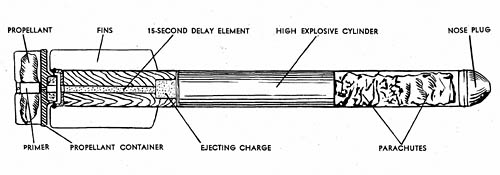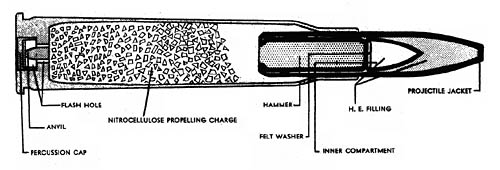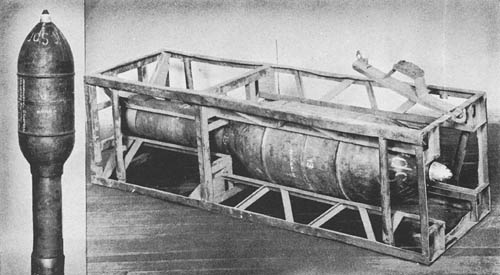
This package-type rocket is a self-contained unit fired from a metal or wood crate. Firing is accomplished by “pointing” the crate at the target, resting the front part of the crate on a mound of dirt (or a similar rest) at an angle from 5° to 45°, and firing by means of a hand electrical firing system.
The propellant charge, contained in the motor tube, is in the form of one stick weighing 14 lb., 9 oz. with one central hole and eight annular holes.
Eight grooves are formed in the sides of the propellant stick, and celluloid tubes are fitted into these grooves. A length of quickmatch in the central hole is inclosed in a celluloid tube.
There are two igniters, one at the front and one at the rear of the propellant. The rear igniter consists of a cloth bag containing 10 grams (154 grains) of NC powder. The front igniter is a metal holder containing a flash composition with a layer of initiating composition.
The bursting charge is contained in the large section, directly forward of the rocket motor tube.
The booster, known as Zdlg. 36, consists of a cylindrical aluminum container filled with penthrite wax and perforated at the top to house a thimble-shaped detonator.
The fuze, Wgr. Z. 50, is a point-detonating or graze action type. The safety pin is removed before firing, leaving the two centrifugal bolts and a split ring to act as a safety feature in flight. The detonator is situated in the inertia pellet.
There are 26 jets at the end of the motor tube inclined approximately 12° right, giving it rotation in flight for stability. The internal diameter of the jets is 0.5 cm (.19 in.) and the external diameter 1 cm (.38 in.).
SPECIFICATIONS
| Weight (total) | 181 lb. | |
| Length (overall) | 3 ft., 11 ins. | |
| Length (body) | 2 ft., 4 1/2 ins. | |
| Length (tail) | 1.85 ft. | |
| Diameter (body) | 11 ins. | |
| Diameter (tail) | .59 in. | |
| Number of ports | 26 | |
| Contents | 110 lb. TNT | |
| Range (maximum) at 42° | 2,337 yds. (estimated) |
German: p. 354
